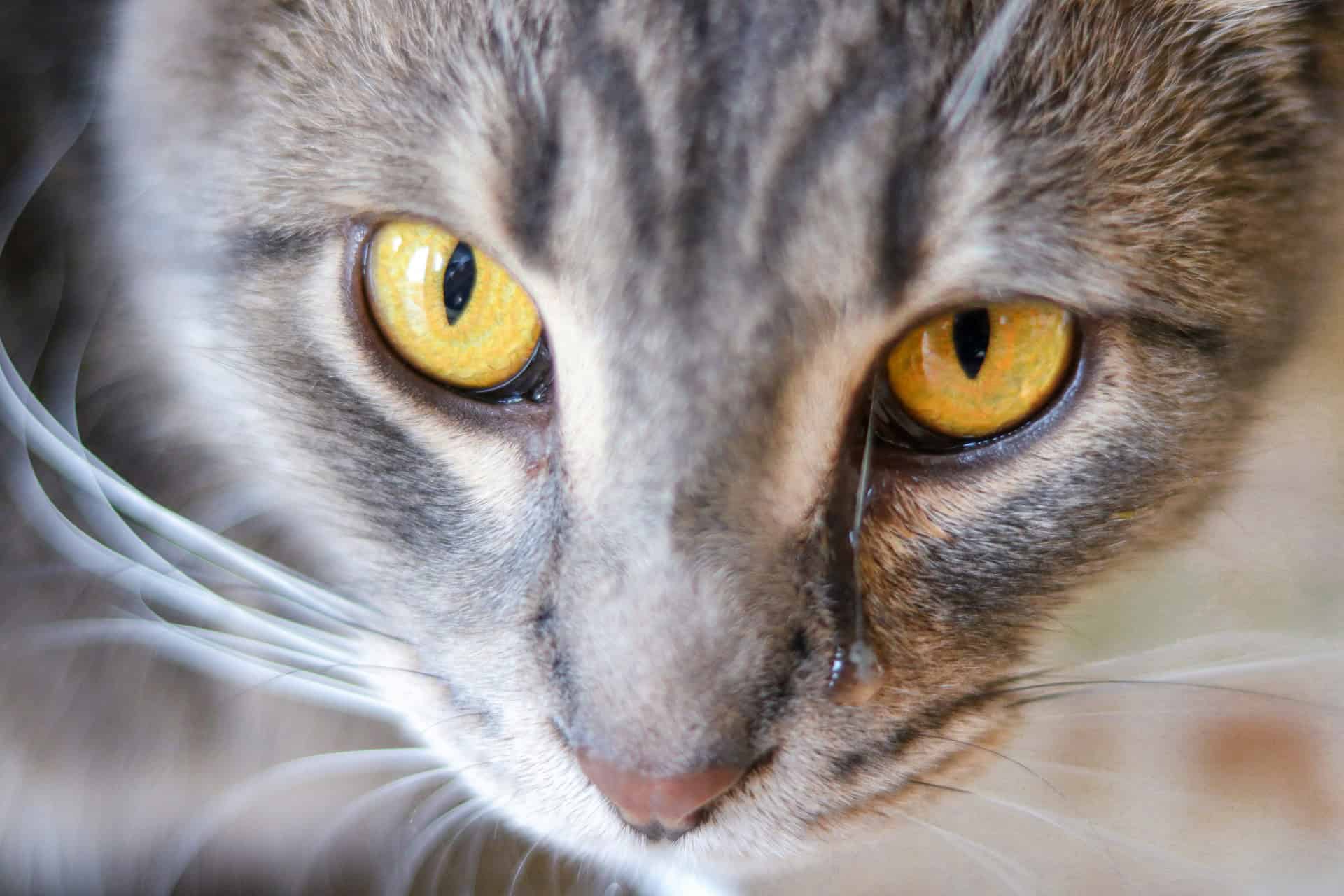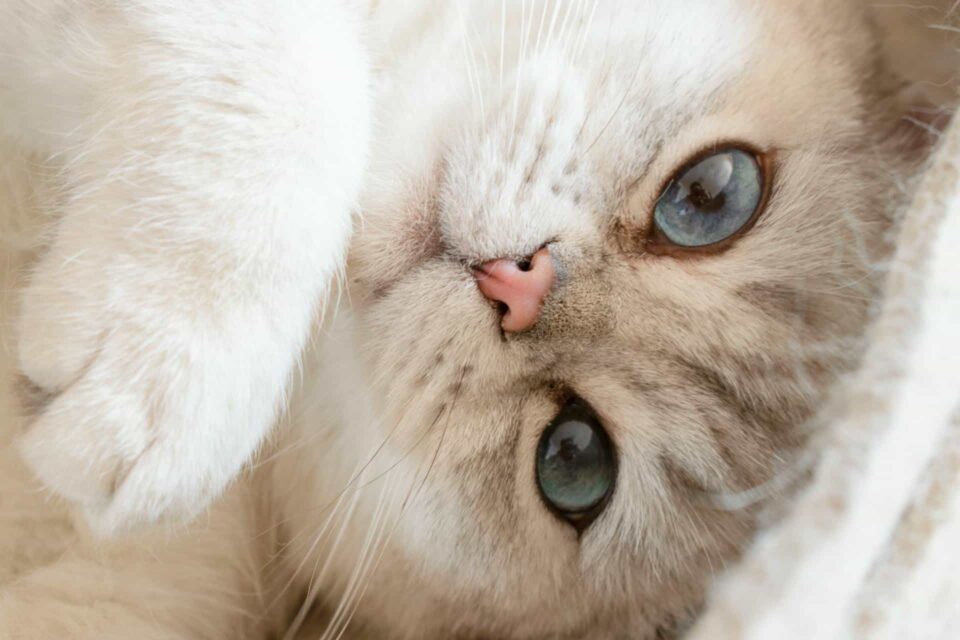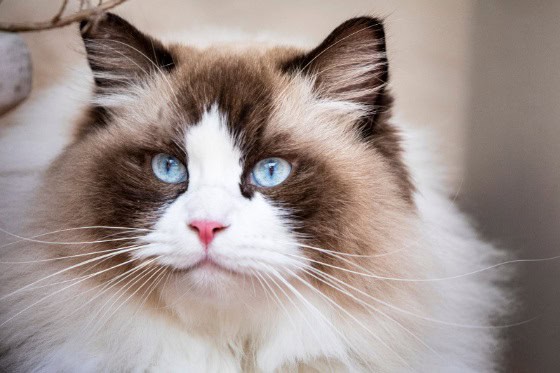
Watery Eyes: Exploring Reasons for Your Cat's Tears
Watery eyes in cats can be a source of concern for pet owners. This condition, often related to the breed's unique facial structure, can result from various eye issues. Our article delves into the anatomical predispositions of cats that contribute to eye problems, common conditions like epiphora and conjunctivitis, and essential care practices to keep your feline friend's eyes healthy.
Key Takeaways
- Cats' distinctive facial features can predispose them to eye conditions such as epiphora, where tears overflow due to improper drainage.
- Conjunctivitis, or pink eye, is another common eye issue in cats, characterized by redness, swelling, and watery discharge, requiring veterinary attention.
- Maintaining a daily eye care routine and understanding when to seek professional care are crucial in managing cats' eye health and preventing complications.
Understanding Cat Eye Issues
Anatomical Predispositions to Eye Problems
Cats with brachycephalic head shape can predispose them to a variety of eye issues. The structure of their face, with a shortened nasal passage and a pronounced forehead, can lead to complications such as excessive tearing or more serious conditions.
One common condition you might notice is epiphora, where tears spill over onto the face rather than draining properly. This can be due to the shape of the tear ducts in cats, which may be narrower or improperly positioned because of their unique facial anatomy. Regularly checking your cat's eyes for signs of excessive tearing can help you catch this issue early.
It's important to be vigilant about your cat's eye health. Here are a few steps to help you monitor their well-being:
- Observe your cat's eyes daily for any signs of excessive tearing or redness.
- Gently wipe away any tear buildup with a soft, damp cloth.
- Schedule regular veterinary check-ups to ensure any anatomical issues are managed properly.
By understanding the anatomical predispositions of your cat, you can better anticipate their needs and provide the care necessary to maintain their eye health.
Related: THE TRUTH BEHIND YOUR CAT’S BEHAVIOR
Epiphora: The Prevalent Tear Overflow
If you've noticed your cat's eyes are often watery, it might be due to epiphora, a condition characterized by excessive tearing. This is not uncommon in Persian cats, whose distinctive facial structure can impede proper tear drainage. The tears may overflow and stain their beautiful fur, which can be concerning for you as a pet owner.
To manage this, consider the following steps:
- Gently wipe away any excess tears with a soft, damp cloth to prevent staining.
- Keep the fur around the eyes trimmed to minimize irritation and accumulation of tears.
- Schedule regular check-ups with your veterinarian to ensure there are no underlying health issues.
Remember, while epiphora can be a chronic issue, it's important to watch for signs of infection such as pus or sticky goop, which could indicate a more serious condition like conjunctivitis or keratoconjunctivitis sicca (dry eyes). In such cases, seeking veterinary care is crucial.
Discover the gentle care of White Tea and Lotus Shampoo, ideal for soothing your cat's delicate eyes and maintaining their comfort. Treat your furry friend to a luxurious grooming experience—explore our product now for brighter, tear-free days ahead.
Conjunctivitis: Recognizing and Treating Pink Eye
If your cat's eyes are showing signs of redness, swelling, and watery discharge, it may be suffering from conjunctivitis, commonly known as pink eye. This condition is an inflammation of the conjunctiva, the delicate membrane lining the eyelids and covering the eyeball. Prompt treatment is crucial to prevent any complications and to provide relief for your feline friend.
When treating conjunctivitis, it's important to follow a few key steps:
- Consult your veterinarian to obtain a proper diagnosis and treatment plan.
- Administer any prescribed medications, such as antibiotic eye drops, exactly as directed.
- Keep your cat's eyes clean by gently wiping away discharge with a soft, damp cloth.
- Monitor your cat's symptoms and ensure they improve over the prescribed treatment period.
Remember, while over-the-counter products may offer quick relief, they should never replace professional veterinary care. Products made in the USA, like those from Gou Gou Pets, often come with the assurance of quality and safety. However, always read labels carefully and consider reviews, as some products may not be effective for every pet. If symptoms persist or worsen, it's essential to seek veterinary care immediately.
Related: NATURAL PAIN RELIEF FOR CATS: HOLISTIC APPROACHES FOR COMFORT

Caring for Your Cat's Eyes
Establishing a Daily Eye Care Routine
After you've established a daily eye care routine for your cat, it's crucial to remain vigilant and consistent. Regular cleaning is a cornerstone of this routine. Use a soft, damp cloth to gently wipe around their eyes to remove any discharge. This simple step can prevent the buildup of bacteria and potential infections.
Keep an eye out for any changes in your cat's eyes, such as alterations in color, consistency of discharge, or signs of swelling. These could be indicators of a more serious condition requiring veterinary attention. Remember, a proactive approach to your cat's eye health can save you and your furry friend from future distress.
Here are some steps you can take:
- Regular Cleaning: Use a soft, damp cloth to gently wipe around their eyes to remove any discharge.
- Check for Changes: Regularly check their eyes for any changes in color, discharge, or swelling.
- Consult with your vet to determine if your cat needs eye drops and how to administer them safely.
Related: THINGS TO REMEMBER WHEN GROOMING YOUR CAT HOLISTICALLY
Identifying When to Seek Veterinary Care
As someone committed to caring for their feline companions, you may frequently find yourself pondering the reason behind your cat's watery eyes. While a certain level of tearing is usual, an abundance of watering might signify a potential health concern. Pay attention to additional symptoms such as excessive scratching, sneezing, or any discharge. These indicators could suggest an underlying health issue necessitating professional veterinary care.These could indicate a more serious underlying issue that requires veterinary attention. Here are steps to take when assessing your cat's eye health:
- Observe your cat's eyes daily for any changes in appearance or behavior.
- Note any persistent redness, swelling, or changes in eye color.
- Monitor for increased discharge, which can be clear or colored.
- If any of these signs persist, it's crucial to consult a vet for a proper diagnosis and treatment plan.
Remember, timely intervention can prevent more severe health problems and ensure the well-being of your beloved feline friend.
Ease your cat's anxiety and promote comfort with our Calming Anxiety Oil, crafted to soothe and support your pet's emotional health during episodes of watery eyes. Invest in your cat's tranquility—explore our product now to help them shine with happiness.
Addressing Common Concerns: FAQs on Cat Eye Health
As you navigate the care of your cat's eyes, you may encounter a variety of questions. What are some common issues with cat eyes? This question echoes the concerns of many cat owners. Persian cats are particularly susceptible to eye problems due to their brachycephalic head shape, which can lead to conditions such as excessive tearing or epiphora, and conjunctivitis.
To address these issues effectively, it's crucial to establish a daily eye care routine. This includes gently wiping away any discharge with a soft, damp cloth and keeping the eye area clean. If you notice persistent or unusual changes, consulting a vet is imperative. They can provide expert opinion and treatment options tailored to your cat's specific needs.
Remember, early detection and treatment are key to maintaining your cat's eye health. Regular check-ups with your vet can help detect issues early and keep your furry friend comfortable and healthy.
Ensuring the health and beauty of your cat's eyes is essential for their overall well-being. At Gou Gou Pets, we offer a range of holistic infused grooming products specifically designed for the delicate eye area of your feline friend.
Visit our website to explore our selection and take advantage of our special offers, such as free shipping on orders over $49 and a 10% discount on your first purchase when you sign up for our email. Care for your cat's eyes with the best products from Gou Gou Pets.

Conclusion
Watery eyes in cats are often a byproduct of their distinctive facial structure, leading to conditions such as epiphora and conjunctivitis. While these issues are common and usually not indicative of serious health problems, they do require attention and care. Regular cleaning and monitoring of your cat's eyes are essential to prevent discomfort and potential complications. It's crucial to consult a veterinarian if you notice any significant changes in your cat's eye health. By understanding the unique needs of cats and providing them with the appropriate care, you can ensure that your feline companion remains happy, healthy, and comfortable.
Share
